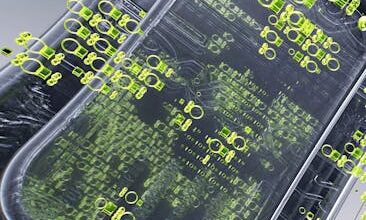The Unseen Thirst: Why Power Efficiency is the Next Frontier

In the relentless pursuit of faster, smarter, and more capable technology, there’s a quiet, yet increasingly critical, challenge looming large: power consumption. Every click, every swipe, every complex AI calculation demands energy, and the sheer volume of this demand is becoming unsustainable – both environmentally and economically. What if we could fundamentally alter this equation? What if we could cut the power needs of every computer chip by *half*? It sounds almost too good to be true, the kind of breakthrough we hear whispers of, but rarely see materialize with real substance.
Enter PowerLattice, a relatively new startup that’s quickly turning heads in the notoriously competitive semiconductor industry. Founded in 2023 by a dream team of veteran electrical engineers hailing from powerhouses like Qualcomm, NUVIA, and Intel, PowerLattice claims to have cracked the code. Their innovation? A groundbreaking approach that promises to reduce the power needs of computer chips by more than 50%. This isn’t just an incremental improvement; it’s a potential paradigm shift.
And now, adding an undeniable stamp of validation to PowerLattice’s audacious claims, none other than Pat Gelsinger, the former CEO of Intel and a seasoned industry titan, has thrown his considerable weight (and investment) behind the company. Gelsinger’s backing isn’t merely financial; it’s a resounding endorsement from a leader who has navigated decades of semiconductor evolution and understands its future trajectory better than most. This isn’t just a startup securing funding; it’s a signal that something genuinely significant is brewing.
The Unseen Thirst: Why Power Efficiency is the Next Frontier
Let’s face it, our digital lives are energy-intensive. From the smartphone in your pocket to the vast data centers powering the cloud and sophisticated AI models, every piece of computing hardware draws power. For years, the industry focused primarily on performance gains, often with the unspoken understanding that more power would be needed to achieve them. But that mindset is rapidly becoming obsolete.
The reasons are manifold. Moore’s Law, the decades-old observation that the number of transistors on a chip doubles approximately every two years, is slowing down. We’re bumping up against the physical limits of silicon. As chips get denser, heat generation becomes a massive problem, impacting reliability and requiring costly cooling solutions. But beyond the technical hurdles, there are even larger forces at play.
AI’s Escalating Energy Footprint
Consider the explosion of Artificial Intelligence. Training large language models and running complex AI inferences demands staggering amounts of computational power, which translates directly into colossal energy consumption. Data centers are already massive energy sponges, and with AI’s trajectory, their power demands are set to skyrocket. Energy efficiency isn’t just a ‘nice-to-have’ anymore; it’s becoming a ‘must-have’ for the sustainable growth of AI and cloud computing.
Edge Devices and the Battery Life Imperative
Then there’s the other end of the spectrum: edge devices. Think about your smartphone, smartwatches, IoT sensors, or autonomous vehicles. In these scenarios, battery life is paramount. Every percentage point of power reduction can mean hours of extra usage, smaller batteries, or more features packed into a device. For many applications, especially those operating remotely or in harsh environments, reducing power consumption is not just about convenience; it’s about enabling entirely new possibilities.
PowerLattice’s Game-Changing Vision: A Deeper Dive into the Chiplet Strategy
The claim of cutting chip power needs by over 50% is bold, to say the least. In an industry where gains are often measured in single-digit percentages, such a leap suggests PowerLattice isn’t just tweaking existing designs; they’re rethinking fundamental principles. While the exact technical details of their ‘groundbreaking approach’ are proprietary, the fact that they’re focusing on a “power-saving chiplet” gives us a crucial clue.
The Rise of Chiplets: A Modular Revolution
For those unfamiliar, chiplets represent a significant architectural shift in chip design. Instead of building an entire complex System-on-a-Chip (SoC) as a single monolithic block, chiplets allow designers to break down a large chip into smaller, specialized components (the “chiplets”). These chiplets – say, one for CPU cores, another for GPU, a third for I/O, and a fourth for memory controllers – can then be manufactured using the most appropriate process technology for each function and interconnected on a single package. This modular approach offers immense flexibility, better yield, and often, improved performance.
PowerLattice’s innovation likely taps into this modularity, perhaps by designing chiplets that are inherently more power-efficient at a foundational level, or by developing new interconnect and power management strategies that drastically reduce energy waste across a multi-chiplet system. Given the founding team’s background, particularly from Intel (a pioneer in chiplet-like architectures like Foveros and EMIB) and NUVIA (known for their highly power-efficient ARM-based designs acquired by Qualcomm), their expertise is perfectly aligned to tackle this challenge.
Achieving such significant power reduction isn’t merely about shrinking transistors; it often involves novel circuit designs, advanced voltage scaling techniques, or entirely new ways of processing information that require fewer energy-intensive operations. PowerLattice isn’t just offering a slightly better battery; they’re promising a fundamental re-engineering of the silicon heart of our computing world.
Pat Gelsinger’s Endorsement: A Beacon in the Semiconductor Fog
When an industry veteran of Pat Gelsinger’s caliber invests in a startup, it resonates deeply across the technology landscape. Gelsinger isn’t just a venture capitalist looking for the next quick return; he’s spent over four decades at the forefront of semiconductor innovation, including a long tenure at Intel and a highly successful stint as CEO of VMware before returning to lead Intel. He understands the intricate dance of physics, economics, and market demand that defines this industry.
His investment in PowerLattice is far more than just capital; it’s a powerful vote of confidence. It suggests that Gelsinger, who has personally overseen the challenges of scaling computing power and managing its energy demands, sees PowerLattice’s technology as genuinely disruptive and possessing the potential to reshape future computing architectures. He’s seen countless innovations come and go, making his backing a significant signal that PowerLattice has something truly special.
This kind of endorsement can be a game-changer for a young company. It can attract further investment, top-tier talent, and crucial partnerships that accelerate development and market adoption. It sends a clear message to other industry players and potential customers: “Pay attention. This is real.”
A Sustainable Future Powered by Innovation
The implications of PowerLattice’s claimed breakthrough, validated by the savvy investment of Pat Gelsinger, are profound. Imagine data centers that consume dramatically less energy, reducing operational costs and carbon footprints. Envision mobile devices with multi-day battery life, and IoT devices that can operate autonomously for years without needing a charge. Picture a world where the relentless march of technological progress doesn’t come with an ever-growing energy bill for the planet.
PowerLattice represents the kind of deep-tech innovation that genuinely moves the needle. It’s a stark reminder that even in seemingly mature industries like semiconductors, there’s always room for revolutionary thinking, especially when driven by experienced minds committed to solving our most pressing challenges. As the world continues its rapid digitalization, the ability to do more with significantly less power will not just be an advantage – it will be a necessity. And with PowerLattice and Pat Gelsinger joining forces, that future might arrive sooner than we think.





